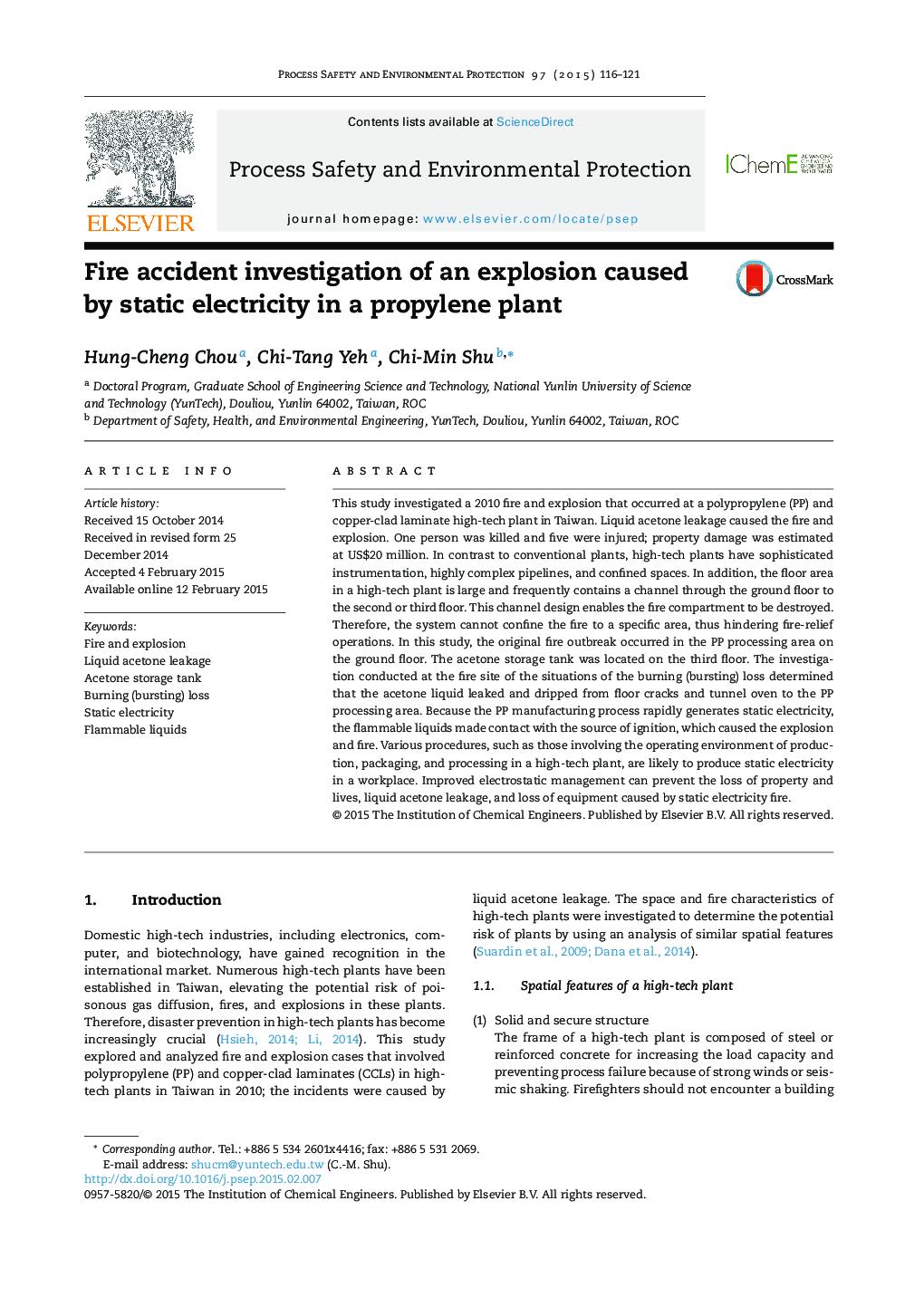| Article ID | Journal | Published Year | Pages | File Type |
|---|---|---|---|---|
| 588304 | Process Safety and Environmental Protection | 2015 | 6 Pages |
•This study investigated a 2010 fire and explosion that occurred at a polypropylene and copper-clad laminate high-tech plant in Taiwan.•Liquid acetone leakage caused the fire and explosion. One person was killed and five were injured; property damage was estimated at US$20 million.•Various processes are likely to produce static electricity in a workplace.
This study investigated a 2010 fire and explosion that occurred at a polypropylene (PP) and copper-clad laminate high-tech plant in Taiwan. Liquid acetone leakage caused the fire and explosion. One person was killed and five were injured; property damage was estimated at US$20 million. In contrast to conventional plants, high-tech plants have sophisticated instrumentation, highly complex pipelines, and confined spaces. In addition, the floor area in a high-tech plant is large and frequently contains a channel through the ground floor to the second or third floor. This channel design enables the fire compartment to be destroyed. Therefore, the system cannot confine the fire to a specific area, thus hindering fire-relief operations. In this study, the original fire outbreak occurred in the PP processing area on the ground floor. The acetone storage tank was located on the third floor. The investigation conducted at the fire site of the situations of the burning (bursting) loss determined that the acetone liquid leaked and dripped from floor cracks and tunnel oven to the PP processing area. Because the PP manufacturing process rapidly generates static electricity, the flammable liquids made contact with the source of ignition, which caused the explosion and fire. Various procedures, such as those involving the operating environment of production, packaging, and processing in a high-tech plant, are likely to produce static electricity in a workplace. Improved electrostatic management can prevent the loss of property and lives, liquid acetone leakage, and loss of equipment caused by static electricity fire.
